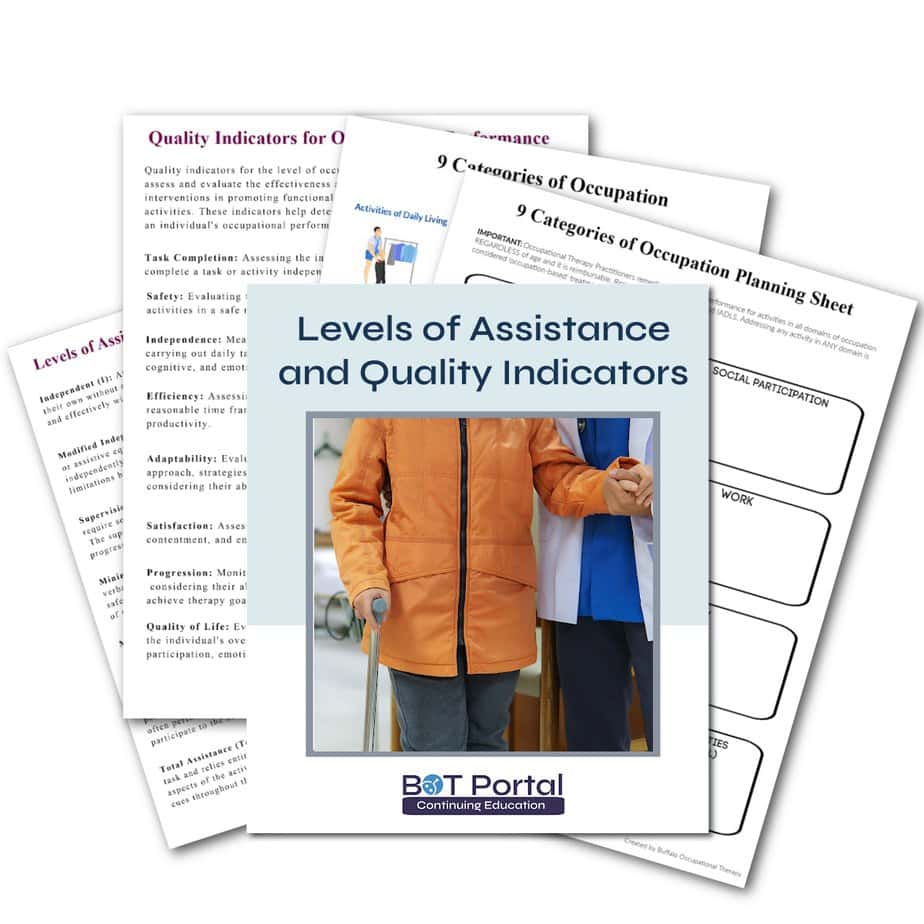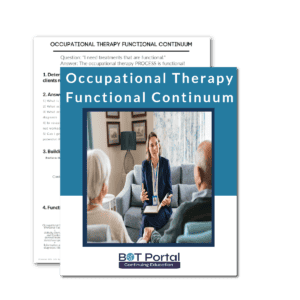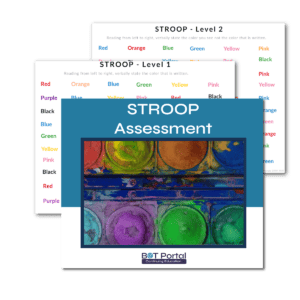Description
Levels of Assistance & Quality Indicators
In occupational therapy (OT), understanding levels of assistance and quality indicators for occupational performance is crucial for tailoring treatment plans and measuring progress. These concepts help therapists assess how much help a person needs to perform daily activities and evaluate the effectiveness of interventions.
Levels of Assistance
- Independent: The individual can perform the activity safely without any help. For example, they can dress themselves without assistance.
- Supervision or Setup Assistance: The person can perform the activity on their own but may need someone nearby for safety or to set up the task. For instance, they might need someone to lay out their clothes but can dress themselves.
- Minimal Assistance: The individual can do most of the activity but needs a small amount of help, typically 25% or less. An example is needing help to put on shoes but doing the rest of dressing independently.
- Moderate Assistance: The person needs more help, about 50% of the activity. For instance, they might need help pulling up their pants and buttoning a shirt.
- Maximal Assistance: The individual requires substantial help, around 75%. They may need someone to assist with most parts of dressing, such as putting on a shirt and pants.
- Total Assistance: The person is unable to perform the activity without help and needs someone to do 100% of the task for them, like fully dressing them.
Quality Indicators for Occupational Performance
Quality indicators are measures used to evaluate how well a person can perform their daily activities. These indicators help therapists understand the effectiveness of their interventions and guide adjustments in the treatment plan. Key quality indicators include:
- Safety: Assessing if the individual can perform activities without risking injury. For example, ensuring a person can use the bathroom safely without slipping or falling.
- Efficiency: Evaluating how smoothly and quickly the individual can complete tasks. This might involve timing how long it takes to dress or prepare a meal.
- Independence: Measuring the level of assistance needed to complete activities. Therapists track progress from needing total assistance to being fully independent.
- Consistency: Observing whether the person can perform tasks reliably over time. This includes being able to dress independently every day, not just occasionally.
- Quality of Movement: Looking at how well the person moves during tasks, such as smoothness, coordination, and precision. For instance, assessing if someone can button a shirt without fumbling.
- Participation and Engagement: Ensuring the individual is actively involved and motivated to participate in daily activities. This can be seen in their willingness to engage in tasks like cooking or socializing.
Importance in Rehabilitation
Understanding levels of assistance and quality indicators is vital in OT rehabilitation. They help therapists set realistic goals, monitor progress, and make necessary adjustments to treatment plans. By focusing on these areas, therapists can effectively support individuals in regaining independence and improving their quality of life.




